D Link DI524H1 Wireless Router User Manual Manual part 3
D Link Corporation Wireless Router Manual part 3
D Link >
Contents
- 1. Manual part 1
- 2. Manual part 2
- 3. Manual part 3
- 4. Manual part 4
- 5. Manual part 5
Manual part 3
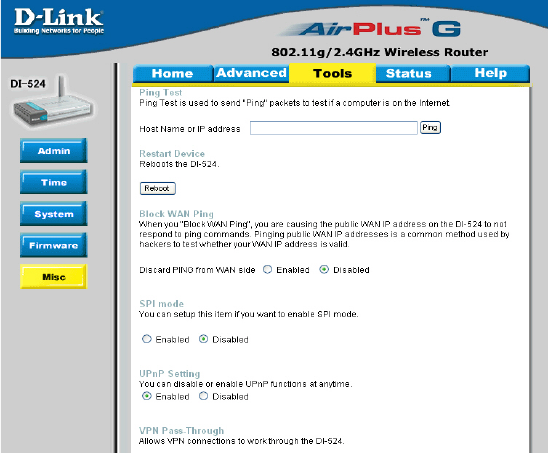
35
Using the Conguration Menu (continued)
Tools > Misc
Ping Test-
Restart
Device-
Block
WAN
Ping-
Discard Ping from WAN side-
VPN
Pass
Through-
PPTP- select Enabled or Disabled
IPSec- select Enabled or Disabled
The Ping Test is used to send Ping packets to test if a computer is on the
Internet. Enter the IP Address that you wish to Ping, and click Ping
If you choose to block WAN Ping, the WAN IP Address of the DI-524
will not respond to pings. Blocking the Ping may provide some extra
security from hackers.
The DI-524 supports VPN (Virtual Private Network) pass-through for
both PPTP (Point-to-Point Tunneling Protocol) and IPSec (IP Security).
Once VPN pass-through is enabled, there is no need to open up virtual
services. Multiple VPN connections can be made through the DI-524.
This is useful when you have many VPN clients on the LAN network.
Click Reboot to restart the DI-524
Click Enabled to block the WAN ping
UPNP- To use the Universal Plug and Play feature click on Enabled. UPNP pro-
vides compatibility with networking equipment, software and peripherals
of the over 400 vendors that cooperate in the Plug and Play forum.
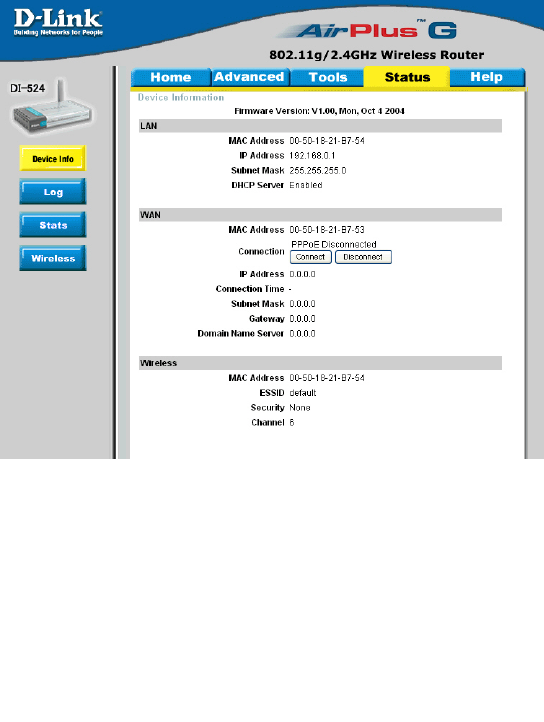
36
Using the Conguration Menu (continued)
Status > Device Info
This page displays the current information for the DI-524. It will display the LAN, WAN
and MAC address information.
If your WAN connection is set up for a Dynamic IP address then a Release button
and a Renew button will be displayed. Use Release to disconnect from your ISP and
use Renew to connect to your ISP.
If your WAN connection is set up for PPPoE, a Connect button and a Disconnect but-
ton will be displayed. Use Disconnect to drop the PPPoE connection and use Connect
to establish the PPPoE connection.
This window will show the DI-524’s working status:
IP Address: WAN/Public IP Address
Subnet Mask: WAN/Public Subnet Mask
Gateway: WAN/Public Gateway IP Address
Domain Name Server: WAN/Public DNS IP Address
WAN Status: WAN Connection Status
Wireless
IP Address: LAN/Private IP Address of the DI-524
Subnet Mask: LAN/Private Subnet Mask of the DI-524
WAN
LAN
MAC Address: Displays the MAC address
SSID: Displays the current SSID
Channel: Displays the current channel
WEP: indicates whether WEP is enabled or disabled
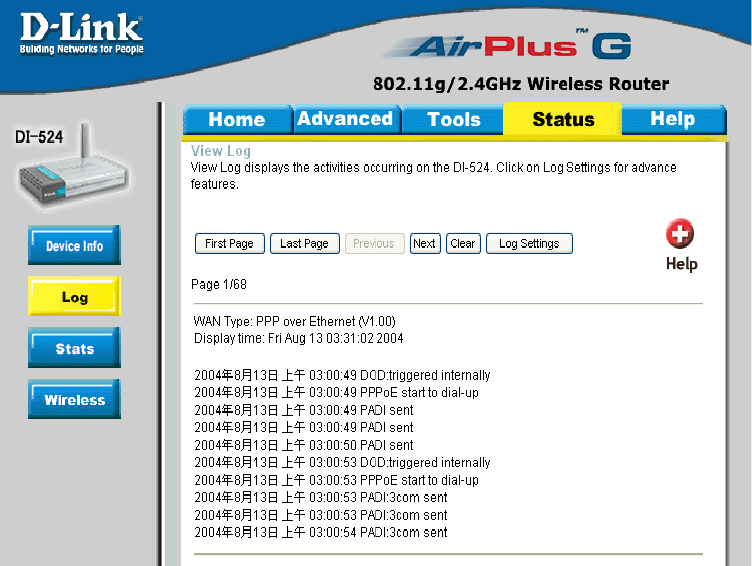
37
The Broadband Router keeps a running log of events and activities occurring on the
Router. If the device is rebooted, the logs are automatically cleared. You may save the
log les under Log Settings.
Using the Conguration Menu (continued)
Status > Log
View Log- First Page - The rst page of the log
Last Page - The last page of the log
Previous - Moves back one log page
Next - Moves forward one log page
Clear - Clears the logs completely
Log Settings - Brings up the page to congure the log
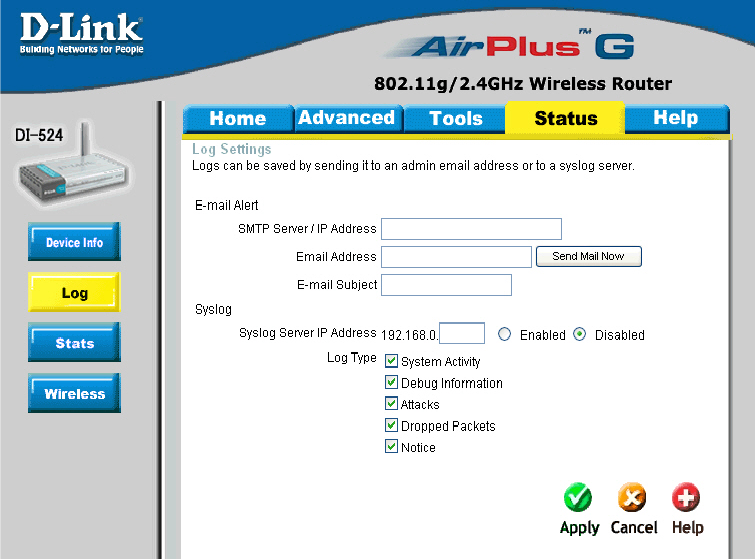
38
Using the Conguration Menu (continued)
Status > Log > Log Settings
Not only does the Broadband Router display the logs of activities and events, it can
setup to send these logs to another location.
The address of the SMTP server that will be used to send the logs
The email address to which the logs will be sent.
Click on Send Mail Now to send the email.
SMTP Server/
IP Address -
Email Address -
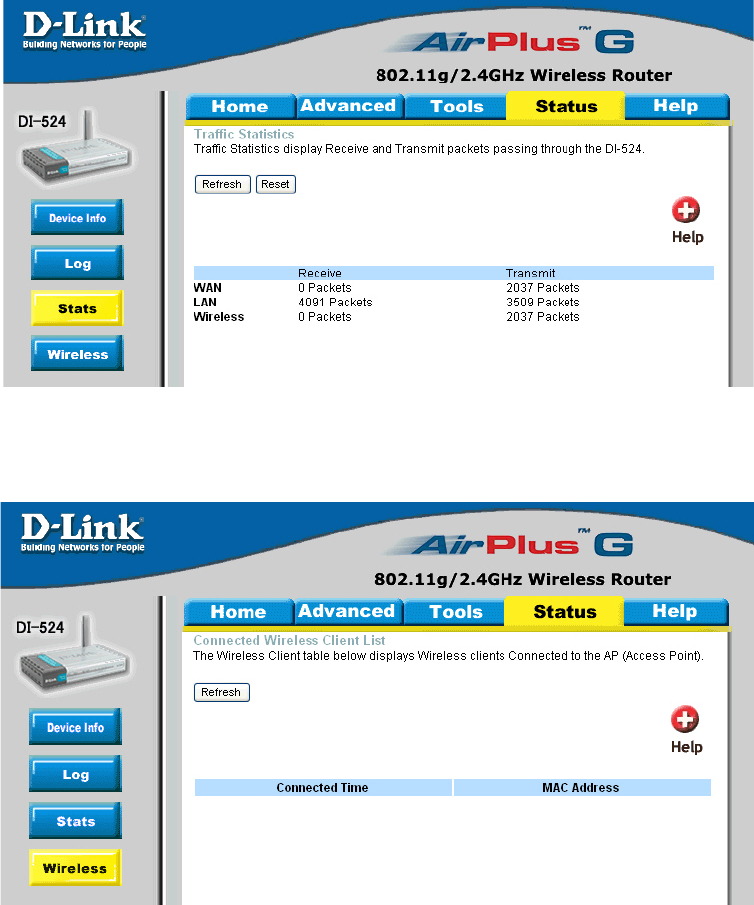
39
Status > Wireless
Using the Conguration Menu (continued)
Status > Stats
The screen above displays theTrafc Statistics. Here you can view the amount of
packets that pass through the DI-524 on both the WAN and the LAN ports. The trafc
counter will reset if the device is rebooted.
The wireless client table displays a list of current connected wireless clients. This
table also displays the connection time and MAC address of the connected wireless
client.
Click on Help at any time, for more information.
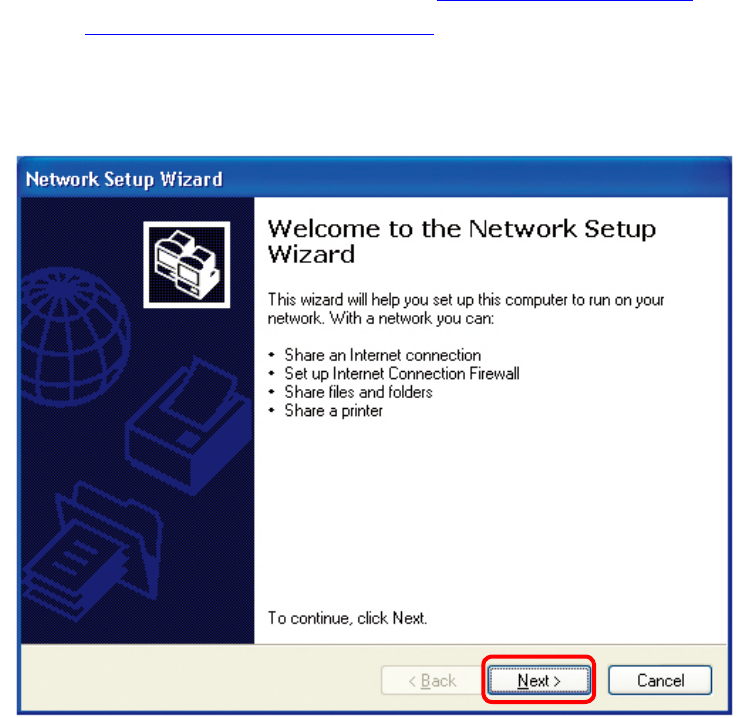
40
Using the Network Setup Wizard in Windows XP
In this section you will learn how to establish a network at home or work, using
Microsoft Windows XP.
Note: Please refer to websites such as http://www.homenethelp.com
and http://www.microsoft.com/windows2000 for information about networking
computers using Windows 2000, ME or 98.
Go to Start>Control Panel>Network Connections
Select Set up a home or small ofce network
Networking Basics
When this screen appears, Click Next.
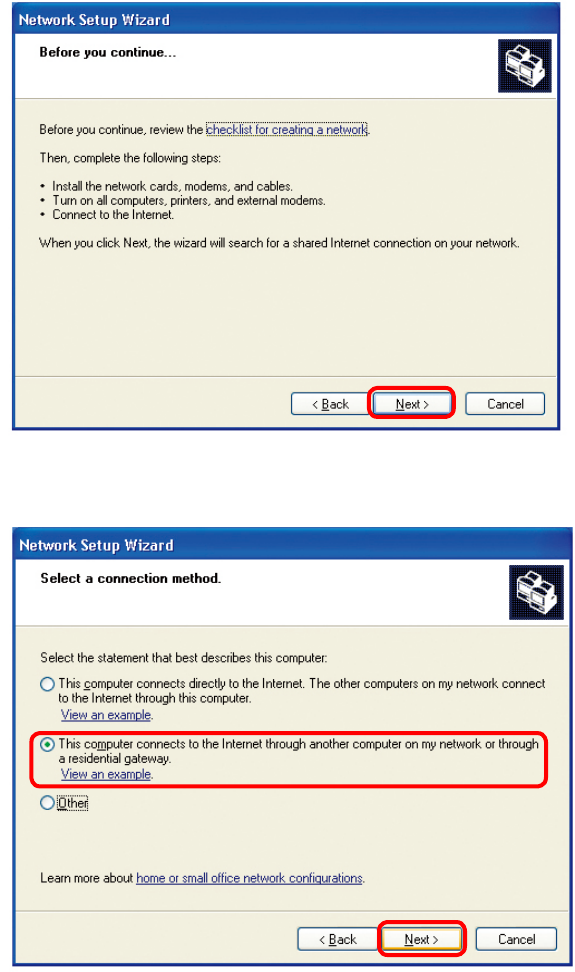
41
Please follow all the instructions in this window:
Networking Basics
Click Next
In the following window, select the best description of your computer. If your computer
connects to the internet through a gateway/router, select the second option as shown.
Click Next
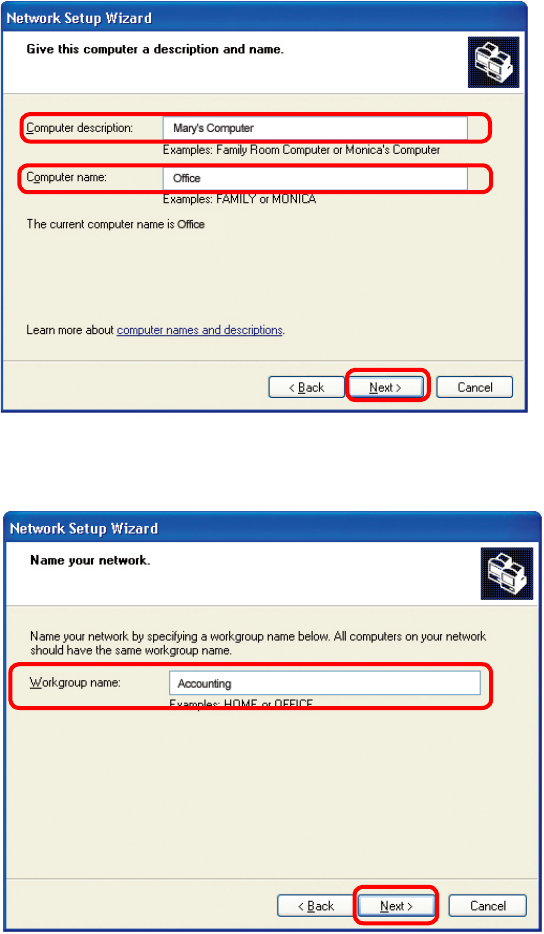
42
Enter a Computer description and a Computer name (optional.)
Networking Basics
Click Next
Enter a Workgroup name. All computers on your network should have the same
Workgroup name.
Click Next
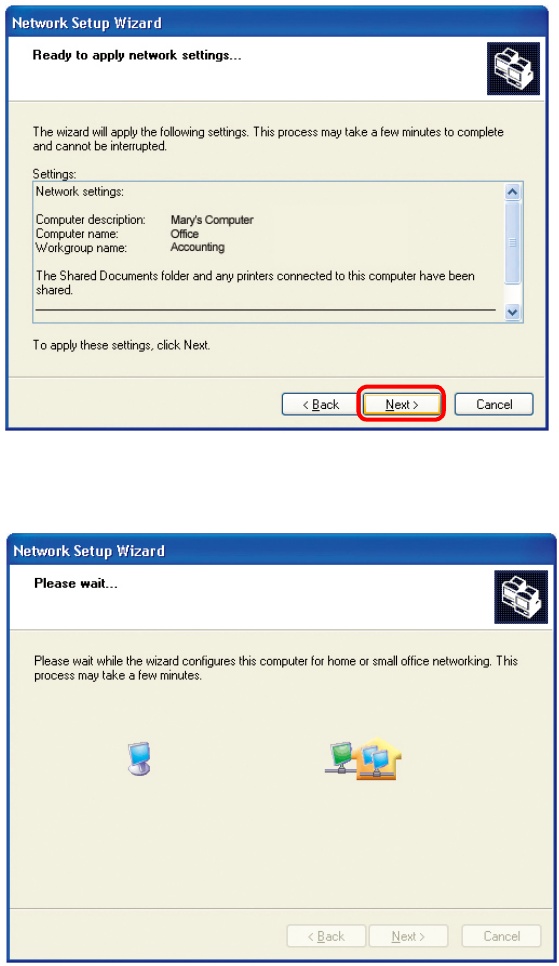
43
Please wait while the Network Setup Wizard applies the changes.
Networking Basics
When the changes are complete, click Next.
Please wait while the Network Setup Wizard congures the computer.
This may take a few minutes.
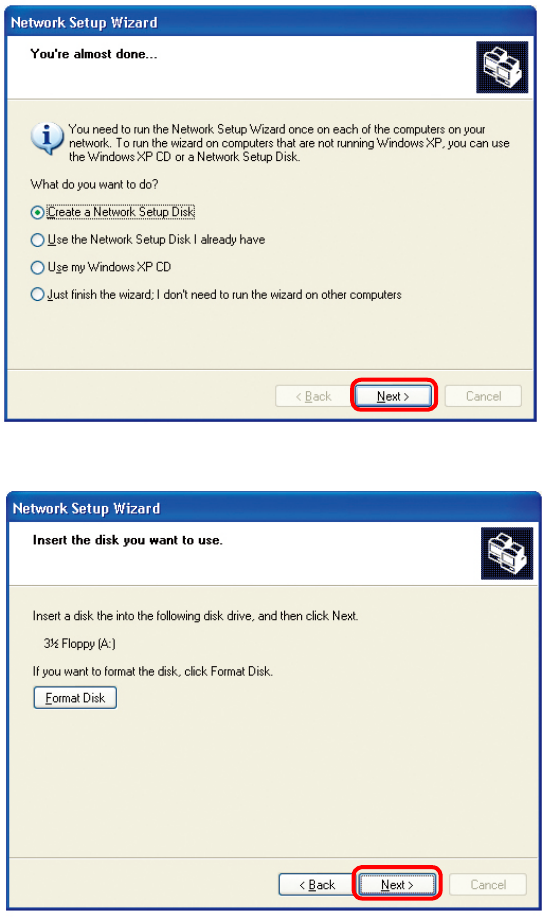
44
Networking Basics
In the window below, select the option that ts your needs. In this example, Create
a Network Setup Disk has been selected. You will run this disk on each of the
computers on your network. Click Next.
Insert a disk into the Floppy Disk Drive, in this case drive A.
Click Next.
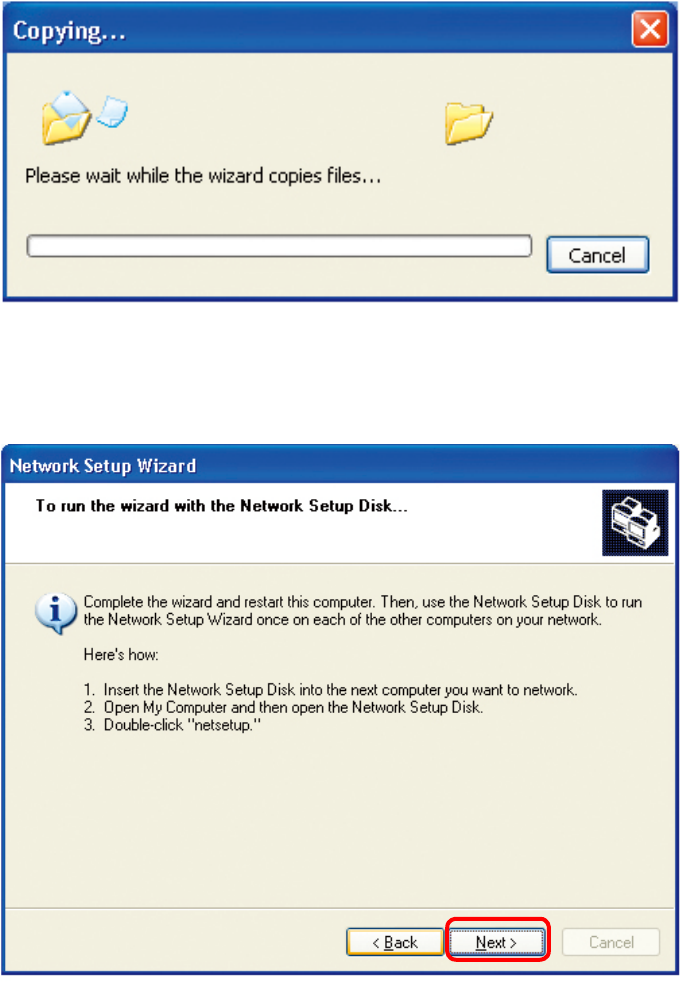
45
Networking Basics
Please read the information under Here’s how in the screen below. After you complete
the Network Setup Wizard you will use the Network Setup Disk to run the Network
Setup Wizard once on each of the computers on your network. To continue click Next.
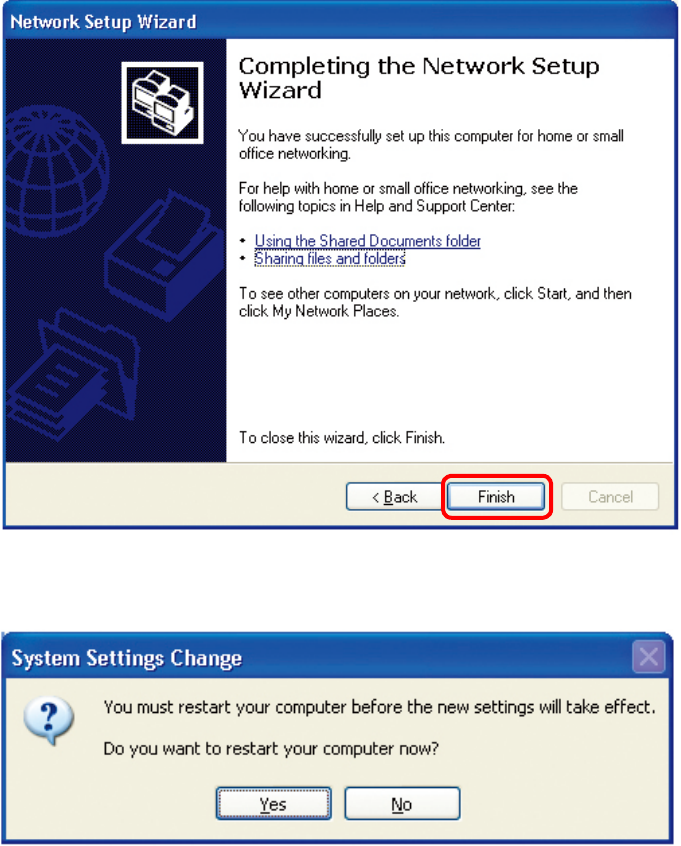
46
Networking Basics
Please read the information on this screen, then click Finish to complete the
Network Setup Wizard.
The new settings will take effect when you restart the computer. Click Yes to restart
the computer.
You have completed conguring this computer. Next, you will need to run the Network
Setup Disk on all the other computers on your network. After running the Network
Setup Disk on all your computers, your new wireless network will be ready to use.